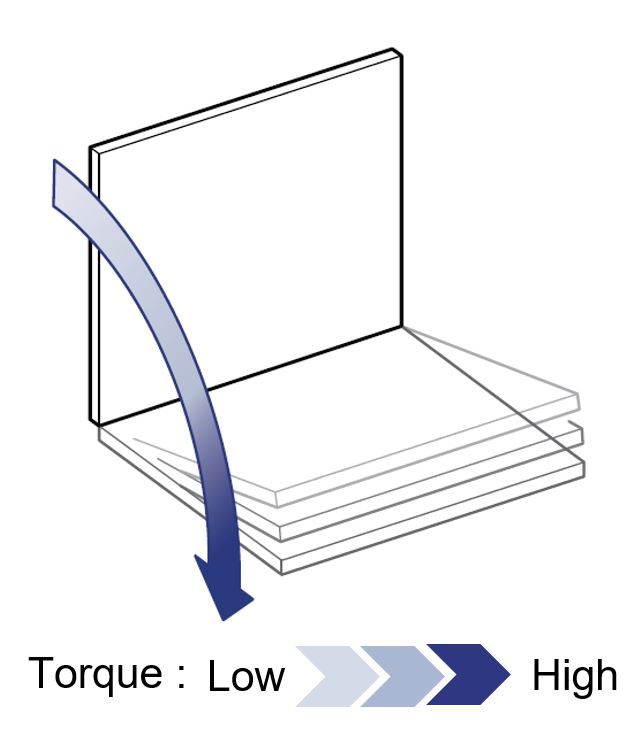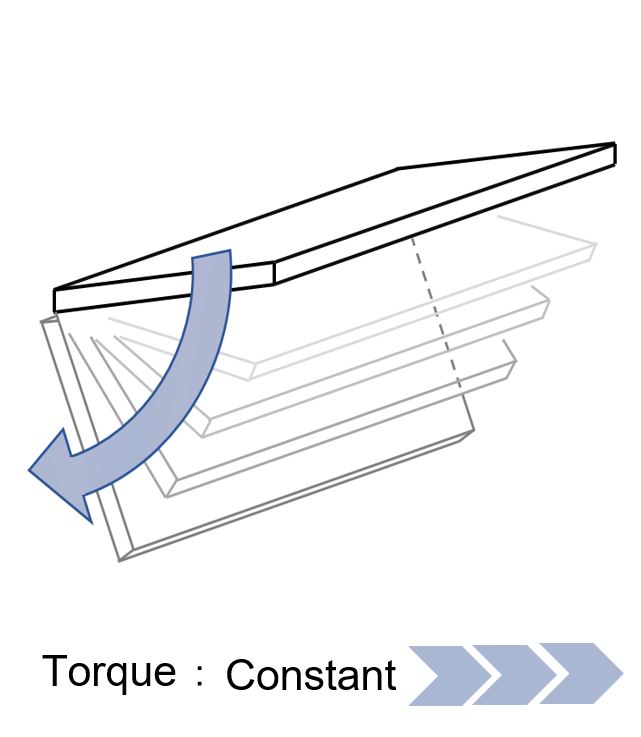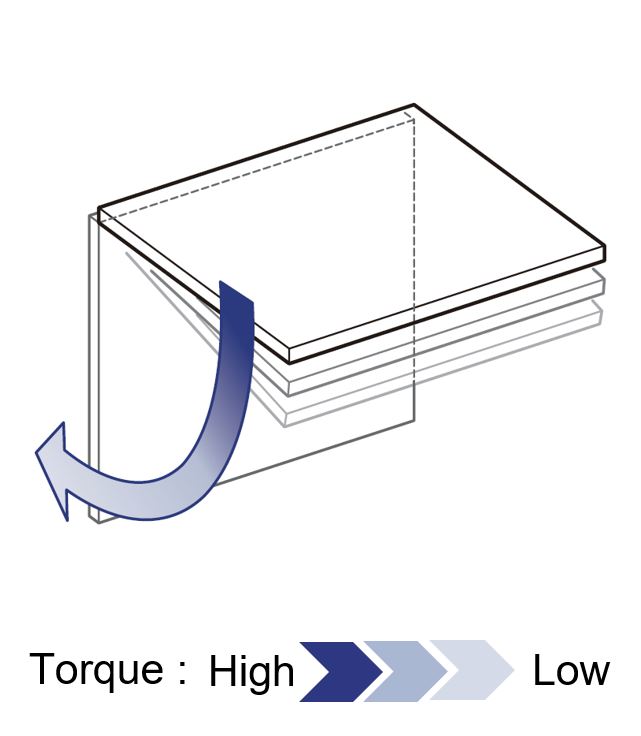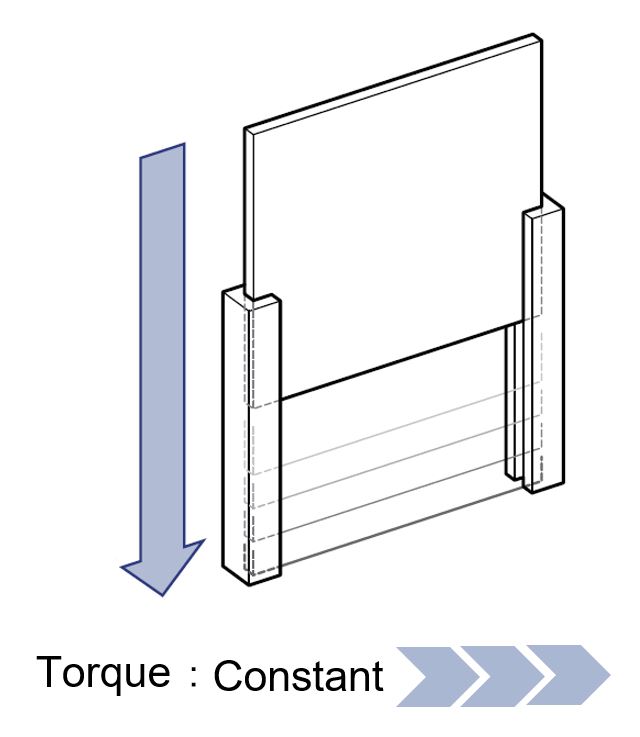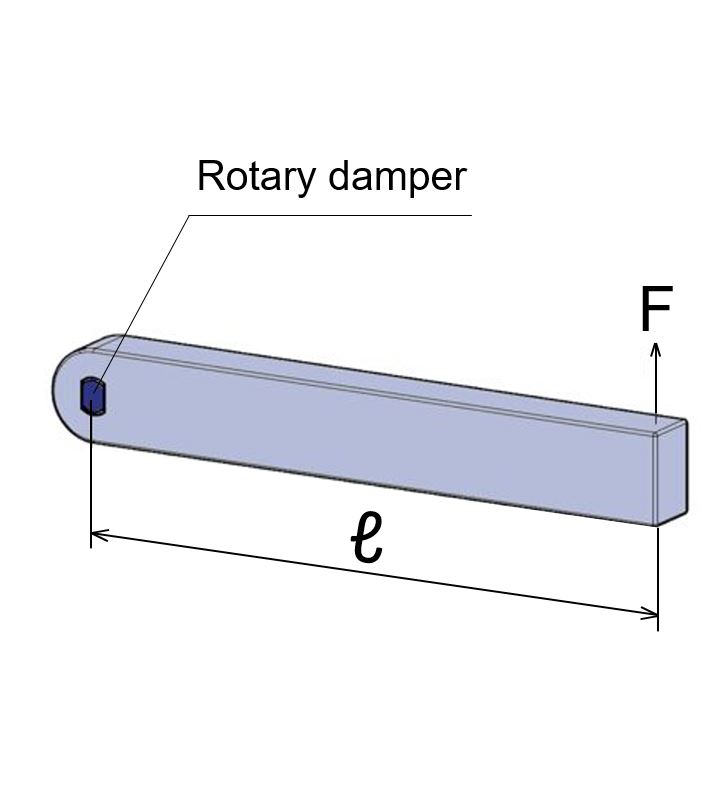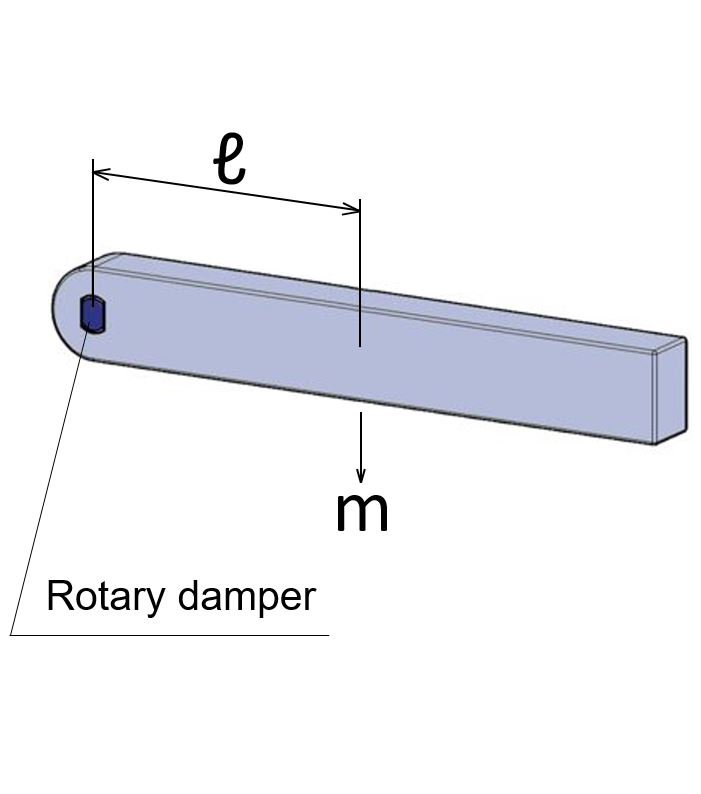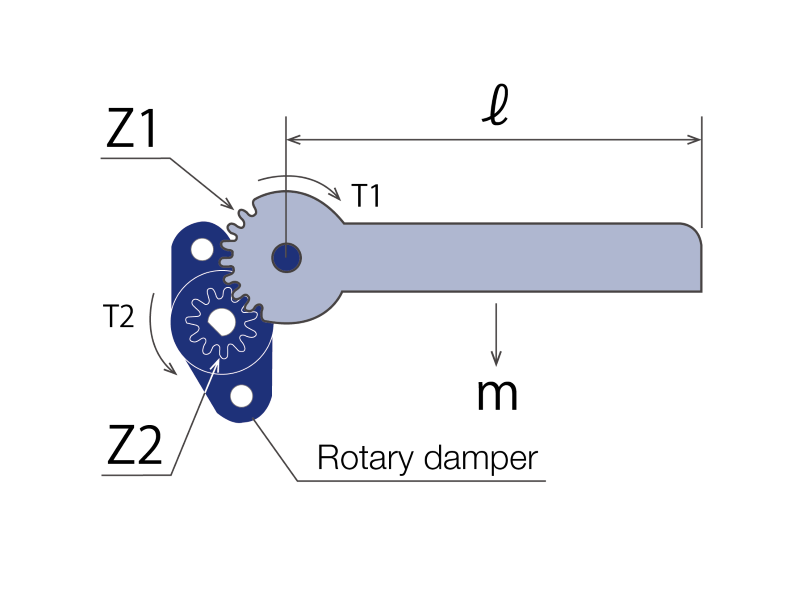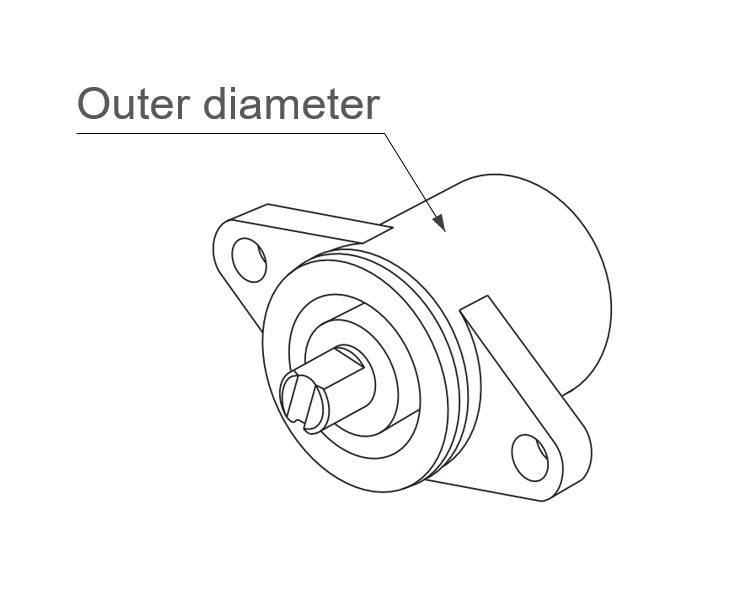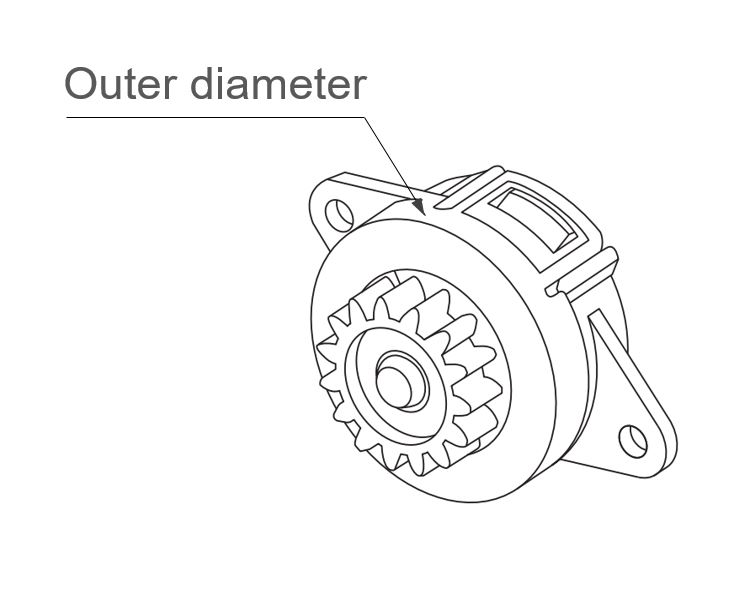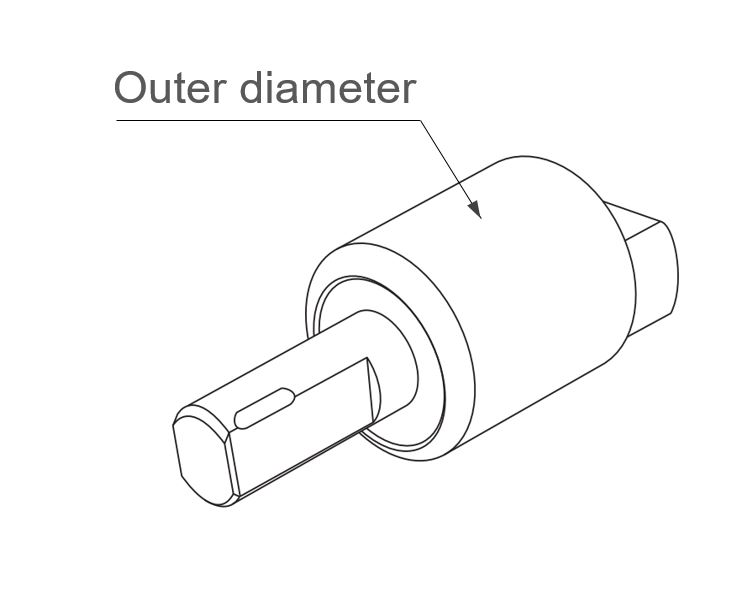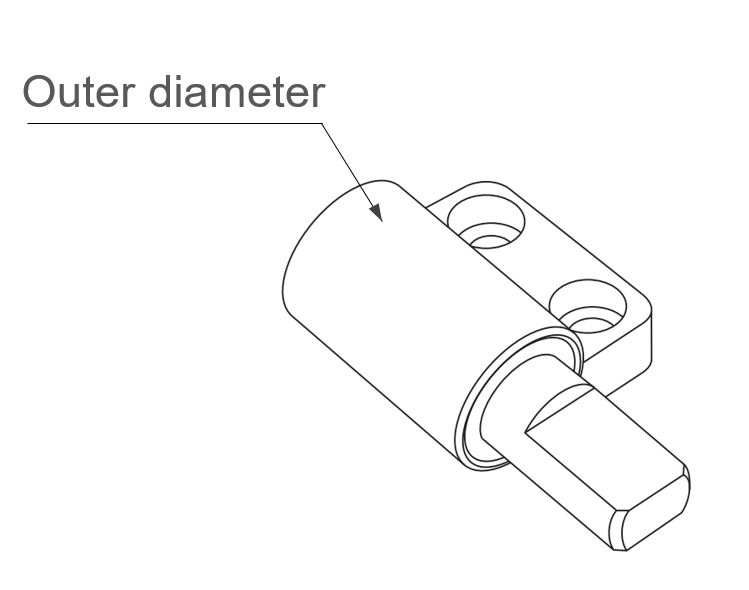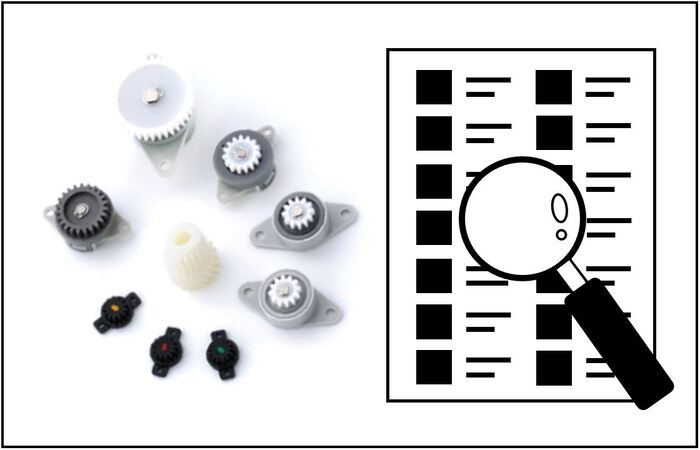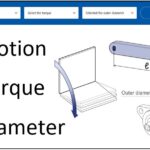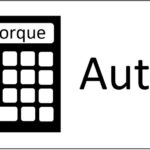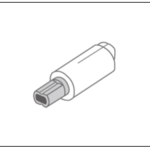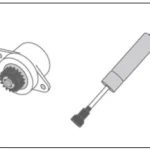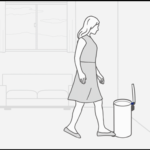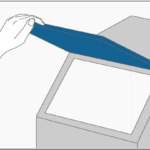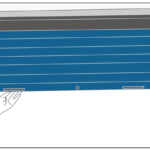Find the suitable product for your purpose.
Contents
Select the rotary damper by the movement
TOK rotary dampers have 4 types of motion.
Select the rotary damper by the torque
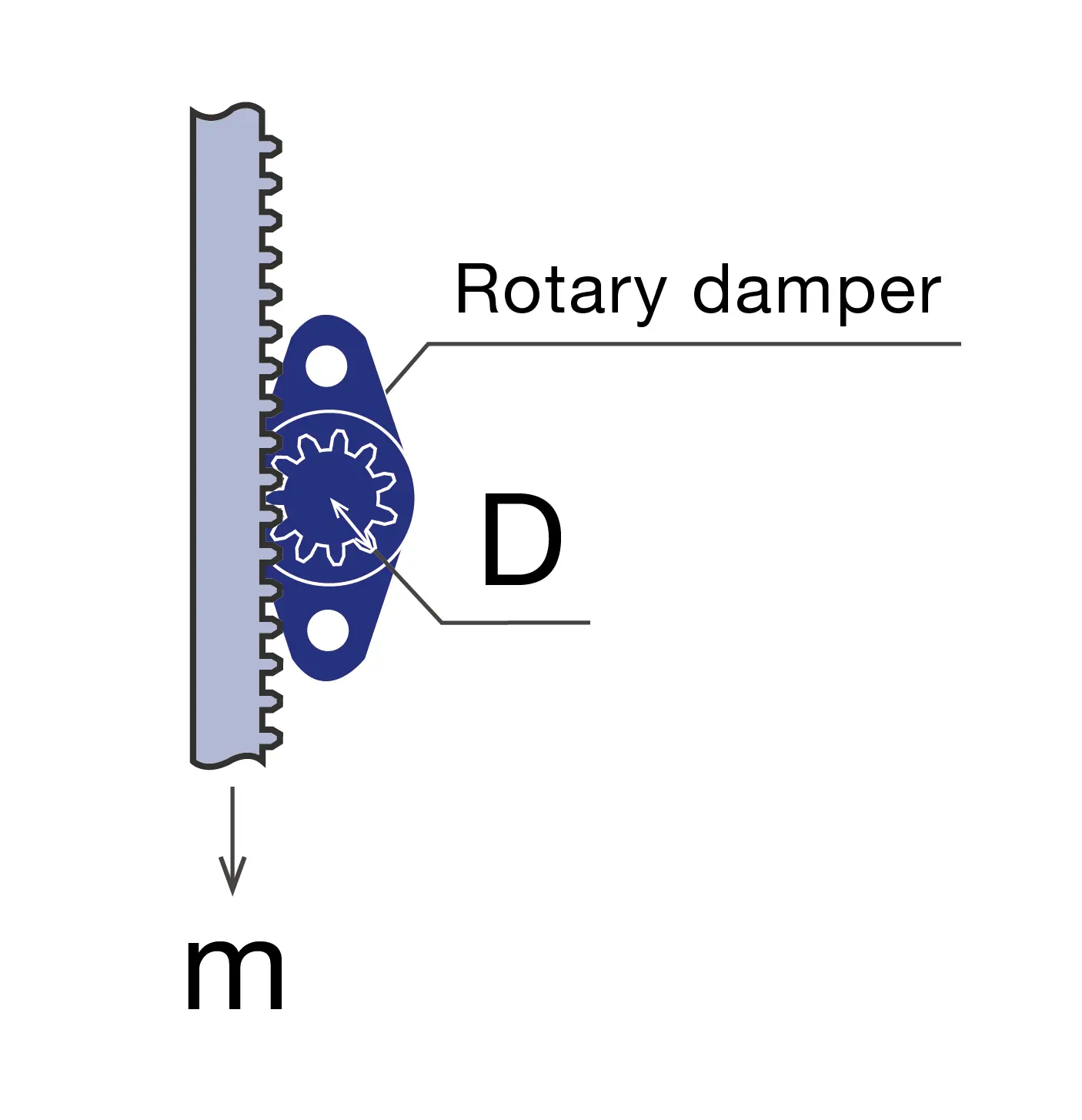
T [mN·m] = m x g x ℓ
T : Torque [mN·m]
m: Mass [kg]
g: Gravitational acceleration is defined as 9.8 m/s2
r: Gear (P.C.D.) radius (in)
Example) Calculate the damping torque required to slowly lower a 0.7 kg shutter using the TD88 series
m = 0.7[kg], g = 9.8[m/s²], r = PCD÷2 = 8.8÷2 = 4.4[mm]
T = m・g・r = 0.7[kg] × 9.8[m/s²] × 4.4[mm] = 30 mN・m
T2 = Z1/Z2 × T1 [mN·m]
T1 : Required torque on the lid side [mN・m] = m × g × ℓ
m: Mass [kg]
g: Gravitational acceleration is defined as 9.8 m/s2
ℓ: Distance from fulcrum to center of gravity [mm]
Z1: Number of teeth on the lid side (along the circumference)
Z2: Number of teeth on rotary damper
T1: The required torque [mN・m] = m x g x ℓ = 57.61 [mN・m] on the lid side is assumed in this explanation.
When the TD88 series is used, the maximum torque is 40 mN-m compared to the required torque of 57.61 mN-m, indicating that the torque is insufficient.
In such a case, a gear train can be used to compensate for the insufficient torque.
Example)
Based on the standard gears of the TD88 series, design so that the lid torque can be used even at twice the damper torque.
Standard gear specifications for the TD88 series: module m = 0.8, number of teeth Z2 = 11
To double the output torque, the number of teeth on the lid side must be doubled, so Z1 = 22 teeth
The torque T2 required for TD88 is calculated by the following calculation for the torque T1 on the lid.
T1 = 57.61 [mN・m], Z1 = 22 [teeth], Z2 = 11 [teeth]
T2 = Z1/Z2 × T1 = 22 [sheets] ÷ 11 [sheets] × T1 [mN・m] = 28.8 mN・m
Select the rotary damper by the design
You can select a product from the outer diameter.

